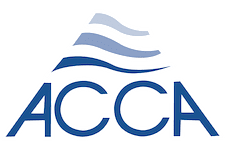As the mercury rises, the importance of a well-functioning home air conditioning system becomes more apparent than ever. A reliable AC system ensures a comfortable living environment. It holds the potential for significant cost-saving benefits, especially when homeowners know how to undertake DIY air conditioner repair. This article delves into the common problems that plague home air conditioners, offering troubleshooting steps for DIY repair and highlighting when it’s prudent to seek professional help.
Common Home Air Conditioner Problems
1. Condenser Does Not Run
Causes: A high thermostat setting, a faulty compressor, a malfunctioning motor, or power issues can all lead to a non-operational condenser.
Troubleshooting steps:
- Verify the thermostat settings.
- Inspect the compressor and motor for faults.
- Ensure the unit receives power.
When to contact a professional: A professional diagnosis may be necessary if the condenser fails to run after basic troubleshooting.
2. Uneven Cooling
Causes: This issue often stems from closed or clogged vents.
Troubleshooting steps: Ensure all vents are open and free from obstruction to allow for even air distribution.
3. Inadequate Cooling
Causes: Incorrect thermostat settings, dirty evaporator coils, or an undersized unit can contribute to insufficient Cooling.
Troubleshooting steps:
- Check the thermostat.
- Clean the evaporator coils.
- Consider the adequacy of your unit’s size for your space.
4. No Cooling
Causes: Various issues, including dirty condenser coils, blocked condensate drain line, low refrigerant, or a faulty compressor, can result in a lack of Cooling.
Troubleshooting steps: Clean the coils and drain line and check refrigerant levels.
When to contact a professional: Refrigerant handling and compressor issues require professional expertise.
5. Condenser Turns On and Off Repeatedly
Causes: Frequent cycling can be caused by obstructions, faulty wiring, or dirty coils.
Troubleshooting steps: Remove any obstructions, check for wiring issues, and clean the coils.
When to contact a professional: Persistent cycling after troubleshooting suggests a deeper issue that warrants expert attention.
6. Faulty Thermostat
Importance: The thermostat is your HVAC system’s command center, dictating your air conditioner’s operation.
Causes: Dead batteries, loose connections, or poor placement can impair thermostat function.
Troubleshooting steps:
- Swap out the batteries.
- Tighten all connections.
- Ensure the thermostat is positioned away from any heat sources.
When to contact a professional: If problems persist, the thermostat may need professional recalibration or replacement.
Repair and Maintenance Steps
1. Check the Breaker or Fuse Panel: A tripped breaker or blown fuse can cut power to your AC unit.
2. Change the Filter: Regularly replacing or cleaning the filter can prevent air conditioner problems.
3. Test the Thermostat: Ensure it’s accurately reading and regulating the indoor temperature.
4. Remove Ice Build-Up: Ice on the coils must be gently removed, and the cause of the freeze-up needs to be addressed.
5. Clean the Vents: Dust and debris in the vents can hinder airflow and degrade air quality.
6. Clear Space Around the Compressor: Ensure adequate airflow around the outdoor unit.
7. Inspect the Air Ducts: Leaks or blockages in the ductwork can significantly reduce efficiency.
8. Clean the Evaporator Coils: Dirty coils can impair the unit’s ability to cool the air.
9. Clean the Compressor Coils: The compressor coils must be kept clean for optimal performance like the evaporator coils.
10. Examine the Coolant Lines: Check for leaks or insulation damage on the refrigerant lines.
Additional Tips and Resources
Maintenance Schedules and Routines: Creating a routine maintenance plan can increase your AC unit’s longevity and operational efficiency.
Importance of Professional Maintenance: While many tasks can be done by yourself, an annual check-up by a professional can prevent major issues and ensure your system is running at peak efficiency.
Recommended Tools and Materials: an essential toolkit for AC maintenance includes a screwdriver, wrench, rags, coil cleaner, and a fin comb.
Safety Precautions: Always turn off the power to the unit before beginning any repairs to avoid injury.
Maintaining and troubleshooting your home air conditioner doesn’t have to be a daunting task. Armed with the right expertise and equipment, numerous prevalent problems can be tackled with DIY repairs, providing financial savings and the gratification of solving issues firsthand. However, recognizing when to call professional help is crucial to avoid exacerbating issues or risking personal injury. By adhering to the recommendations presented in this article, homeowners can guarantee the seamless operation of their air conditioning systems, ensuring a comfortable and efficient cooling experience during the warmer seasons.
















